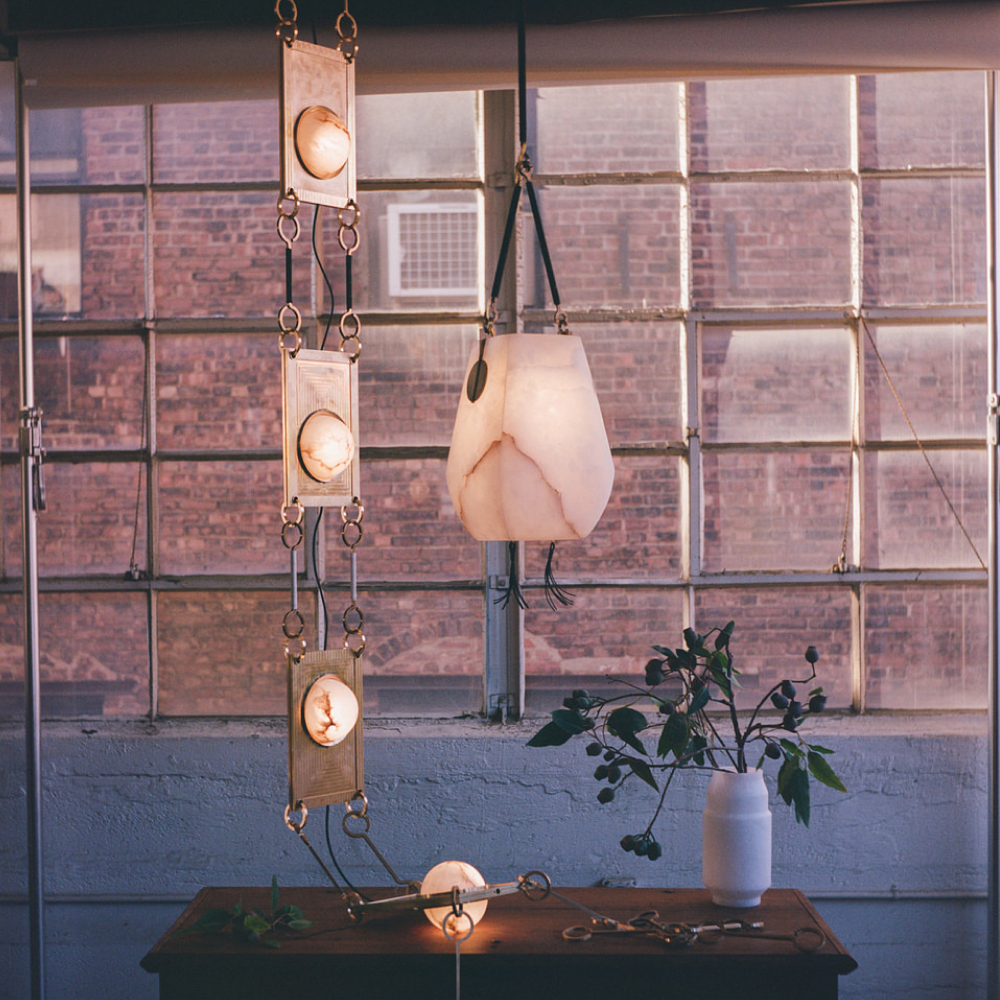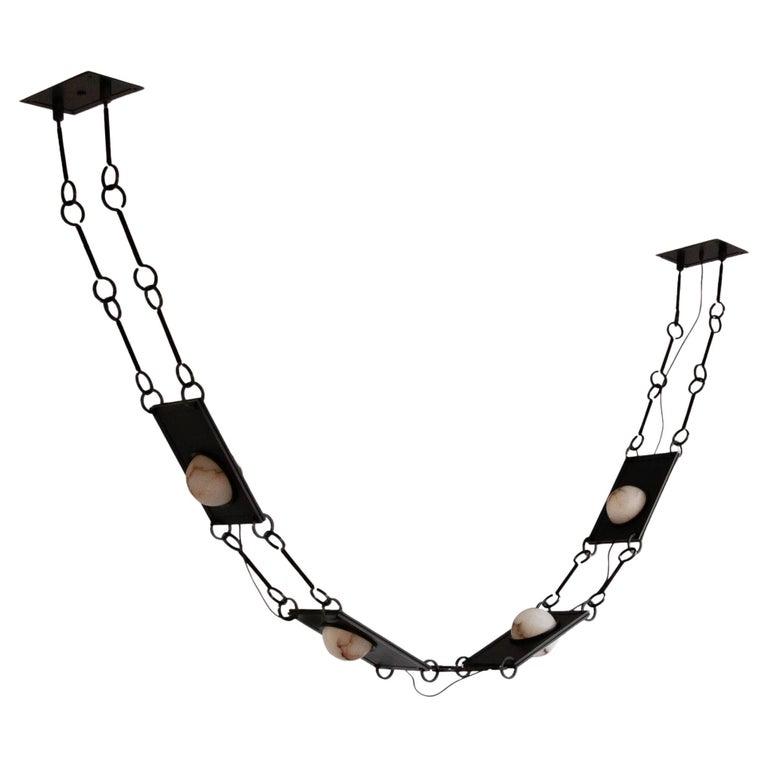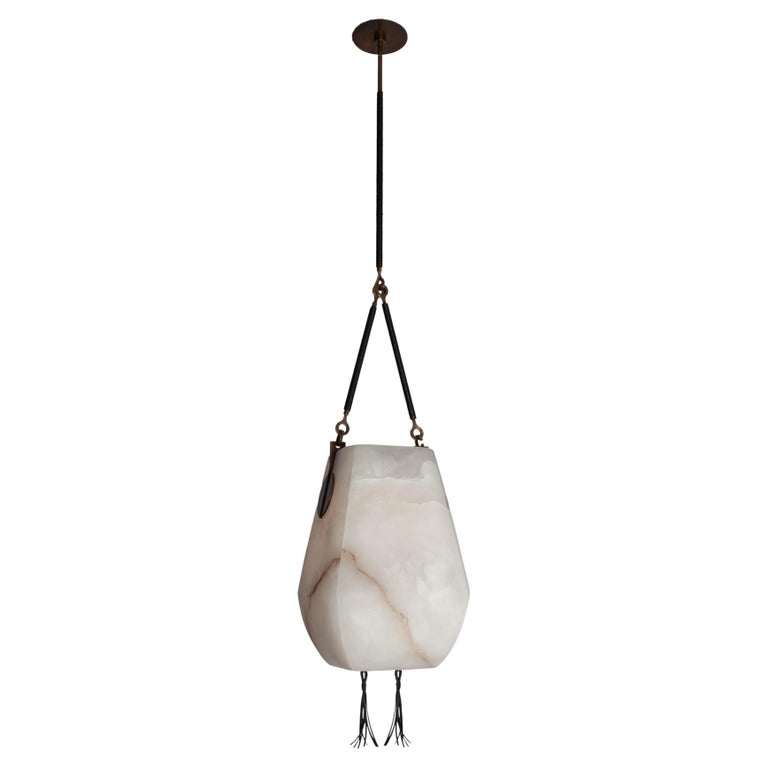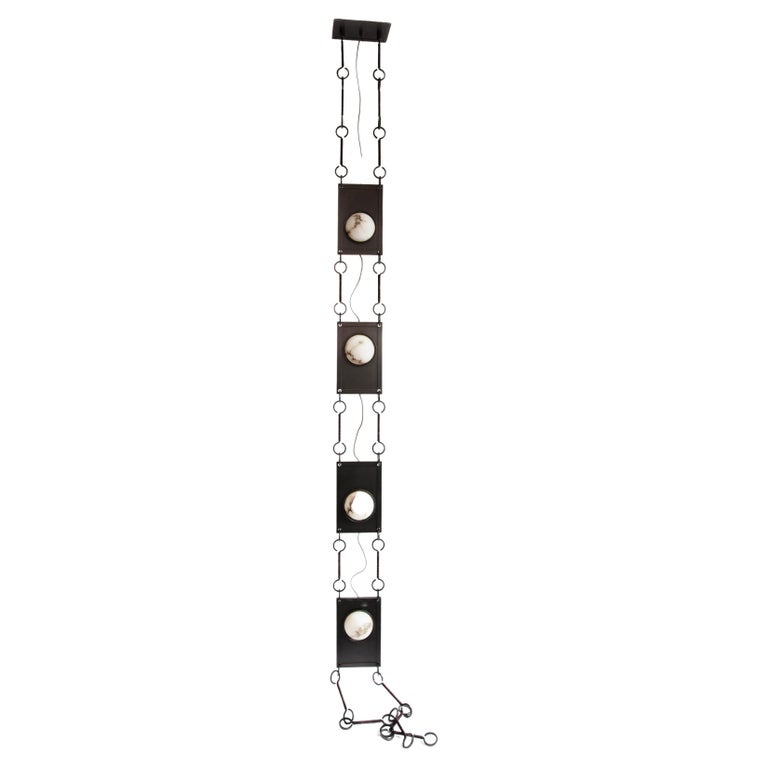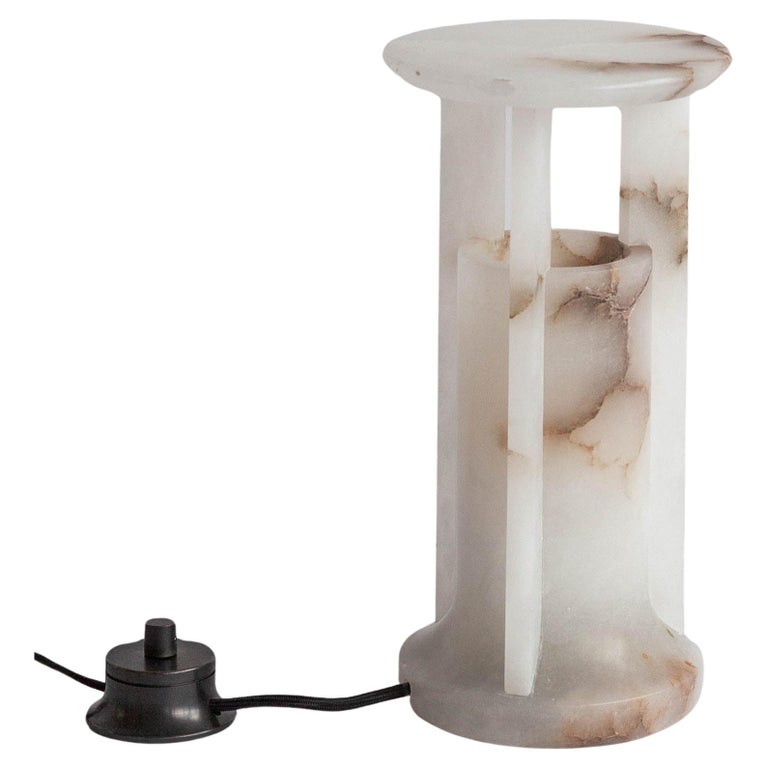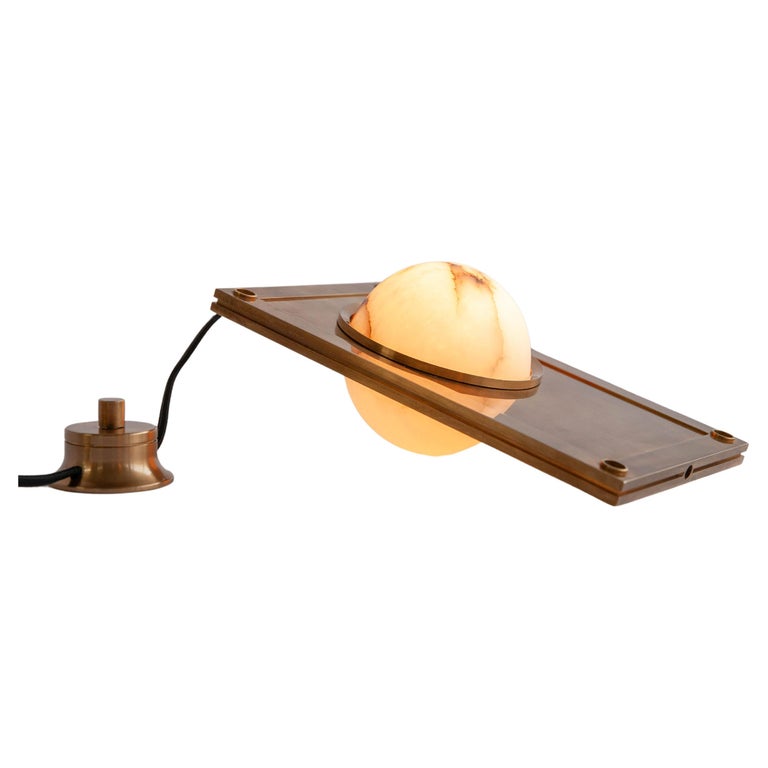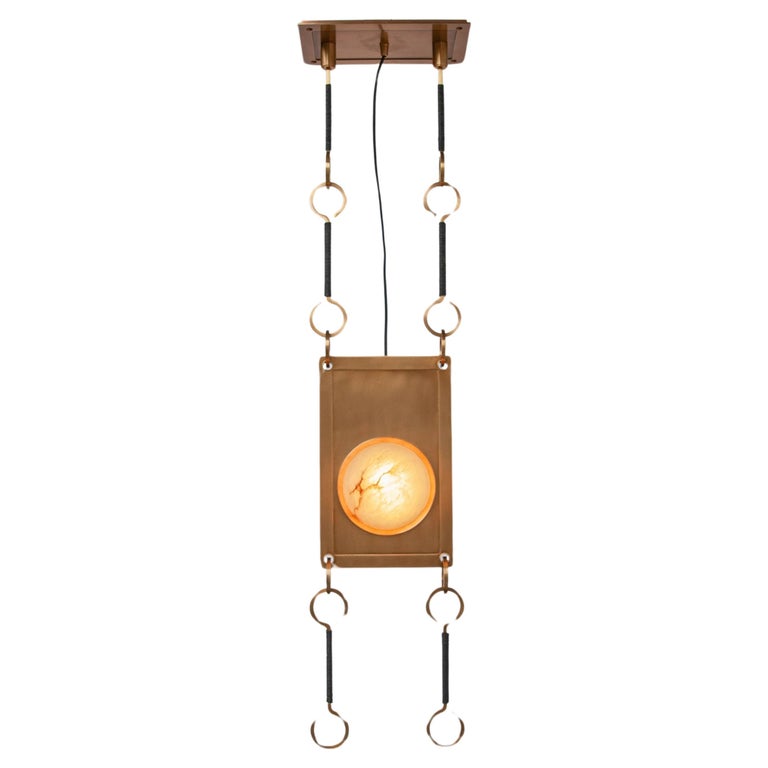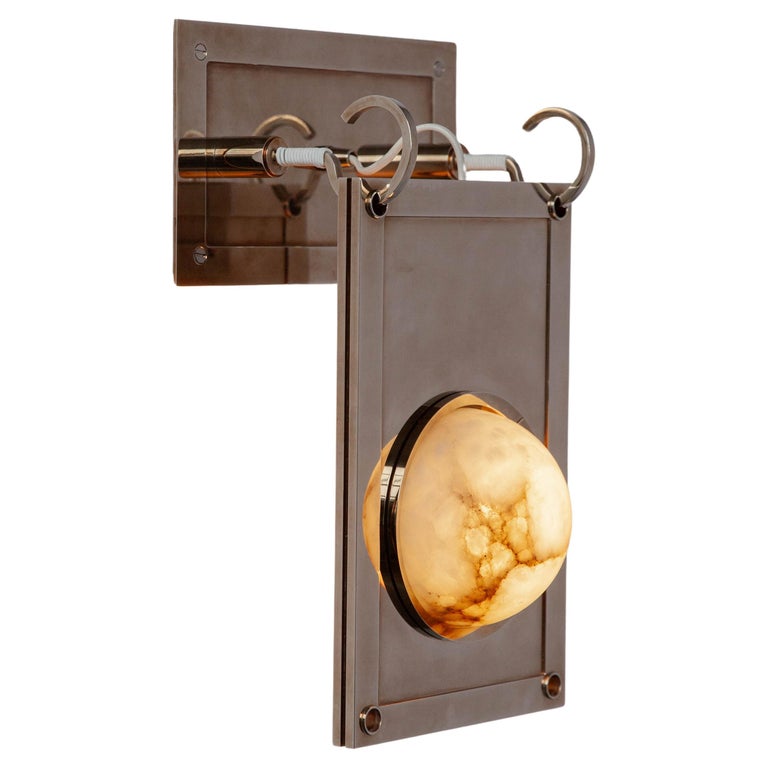February 25, 2024At an age when most kids would be frolicking on a playground, Matthew Fisher often found himself in a rock quarry, wielding a chisel and searching for fossils alongside his geologist father. “We’d really want to find shark teeth, because that was the coolest thing,” he recalls with childlike glee. Back at home, cardboard boxes filled with minerals beckoned from the basement, enticing Fisher with their color and sparkle but leaving him perplexed. Sure, stone was beautiful. But what could you do with it?
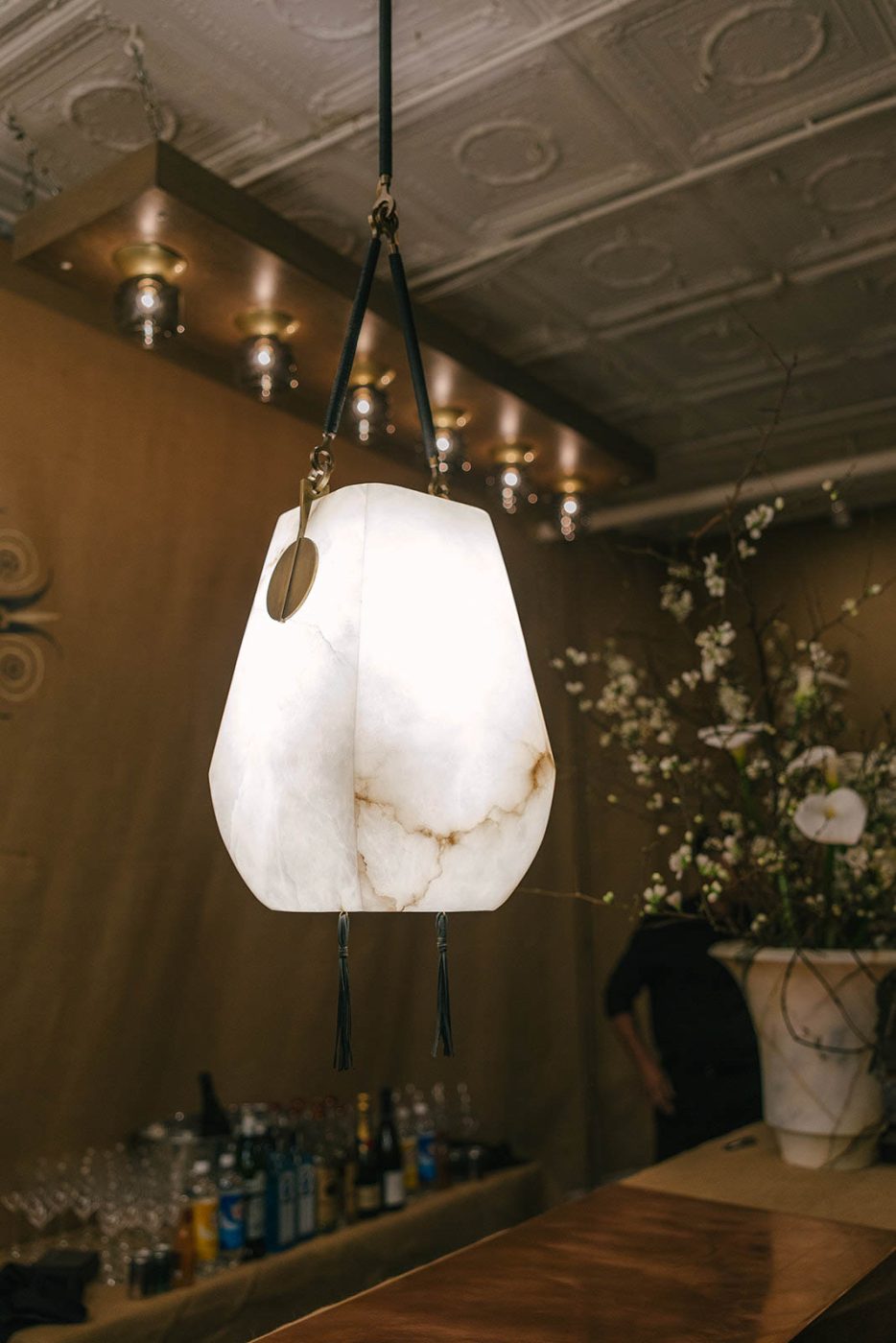
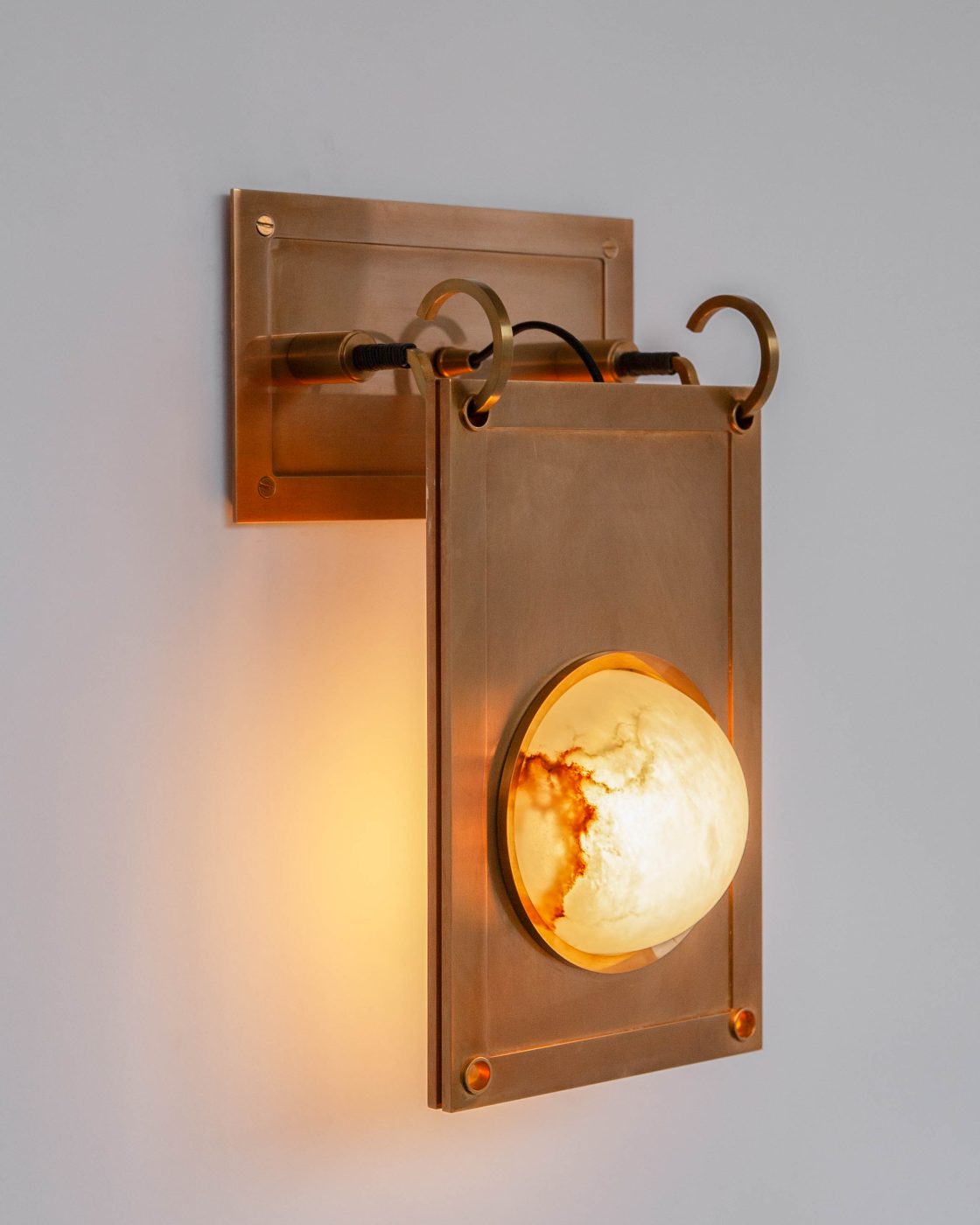
Now 34 and a designer, Fisher has spent more than a decade exploring stone’s potential as a decorative medium. And this month, he’s sharing his discoveries with the world as Remains Lighting Company unveils Ariadne, a seven-piece lighting collection designed by Fisher, inspired by Greek mythology and illuminated by creamy spheres and cylinders of glowing alabaster.
Although stone is usually thought of as a solid, impenetrable substance — the stuff used to build the pyramids and the Taj Mahal — artisans have known for centuries that if you cut it thin enough, it can also be translucent. (That’s evident in the Taj Mahal, with more recent examples including Joshua Ramus’s luminous Perelman Performing Arts Center, which opened in September 2023 at New York’s World Trade Center, and Gordon Bunshaft’s Beinecke Library at Yale.)
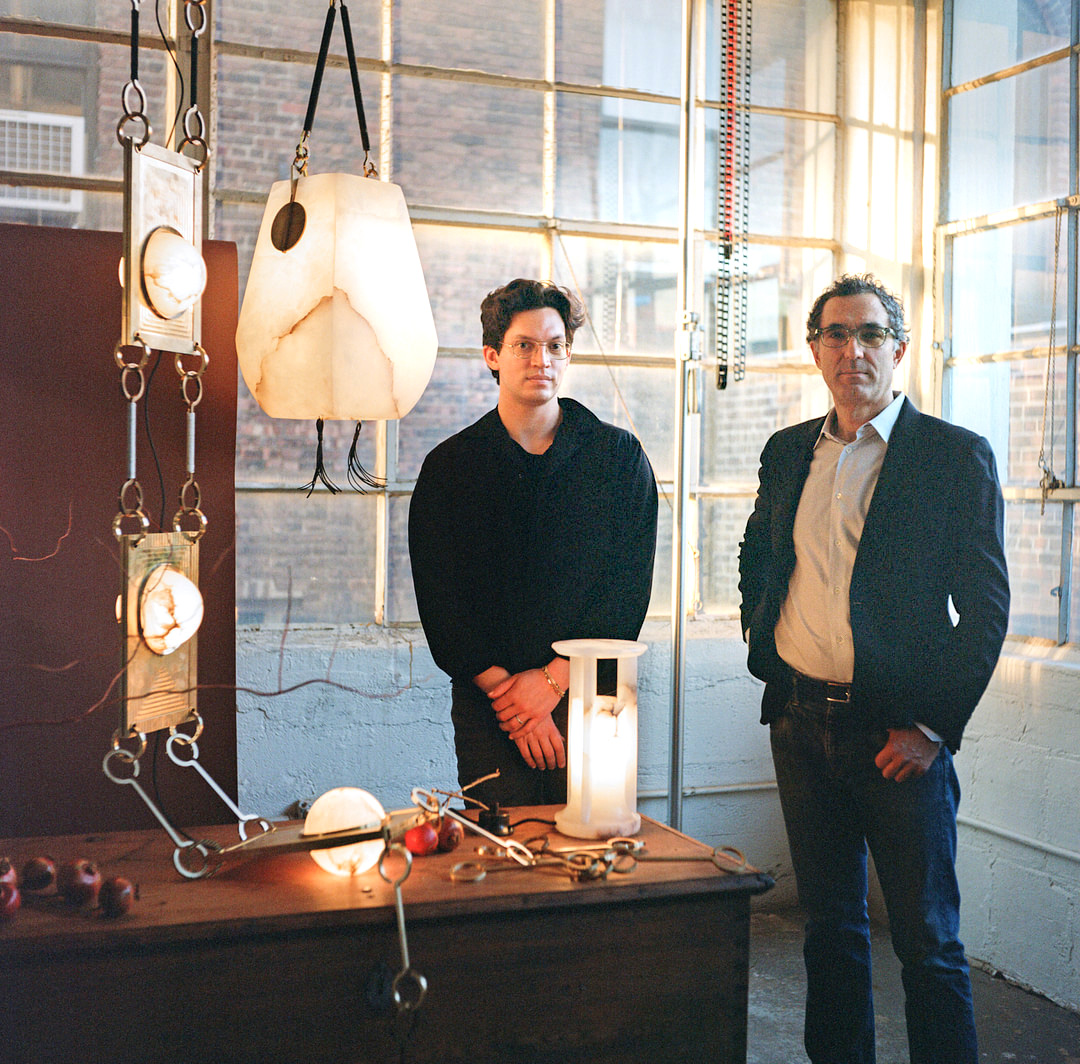
This dichotomy is not lost on Fisher, whose alabaster forms appear cool and opaque in repose but assume a kind of celestial radiance when lit, emitting a warm candescence that accentuates the stone’s delicate veining. “It’s just something you don’t get when you’re working with glass,” the designer says.
Fisher notes that his collection was inspired by the thread and jewels that Ariadne used to guide Theseus out of the labyrinth after he slew the Minotaur. The new collection is dominated by the recurring presence of a glowing orb that passes through a metal plate: It rests on the diagonal as a table light, hangs from wall hooks as a sconce and is suspended like ladder rungs in a chandelier and a pendant.
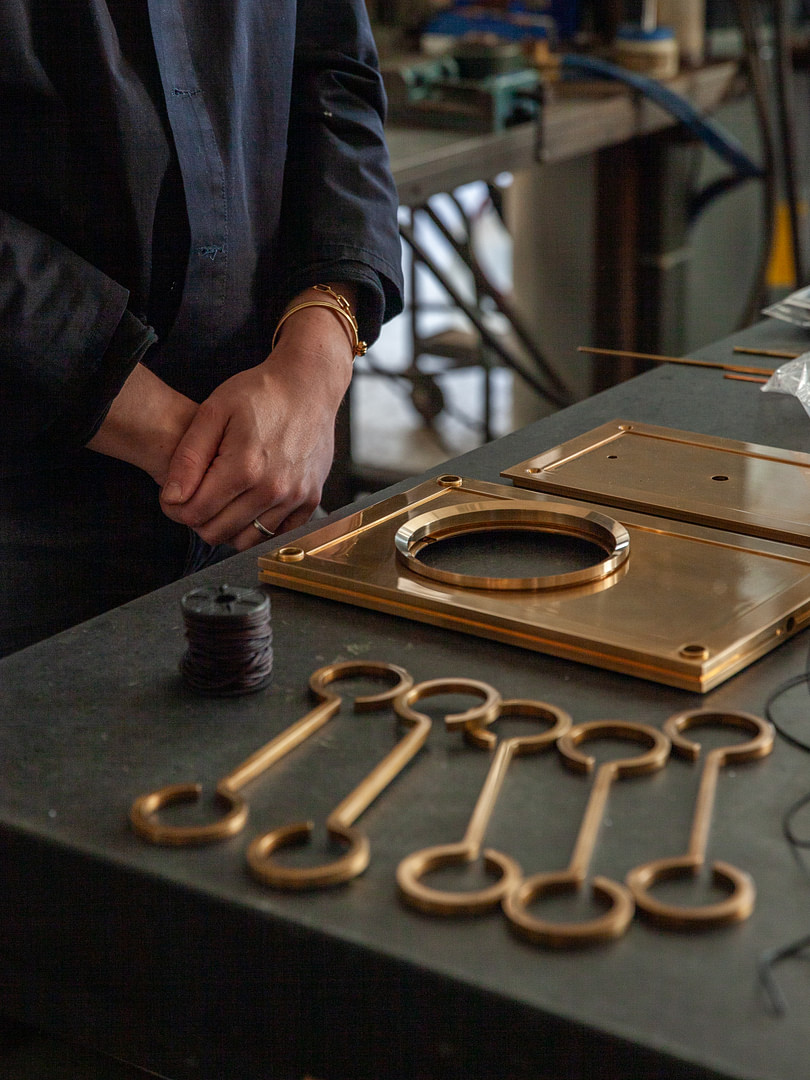
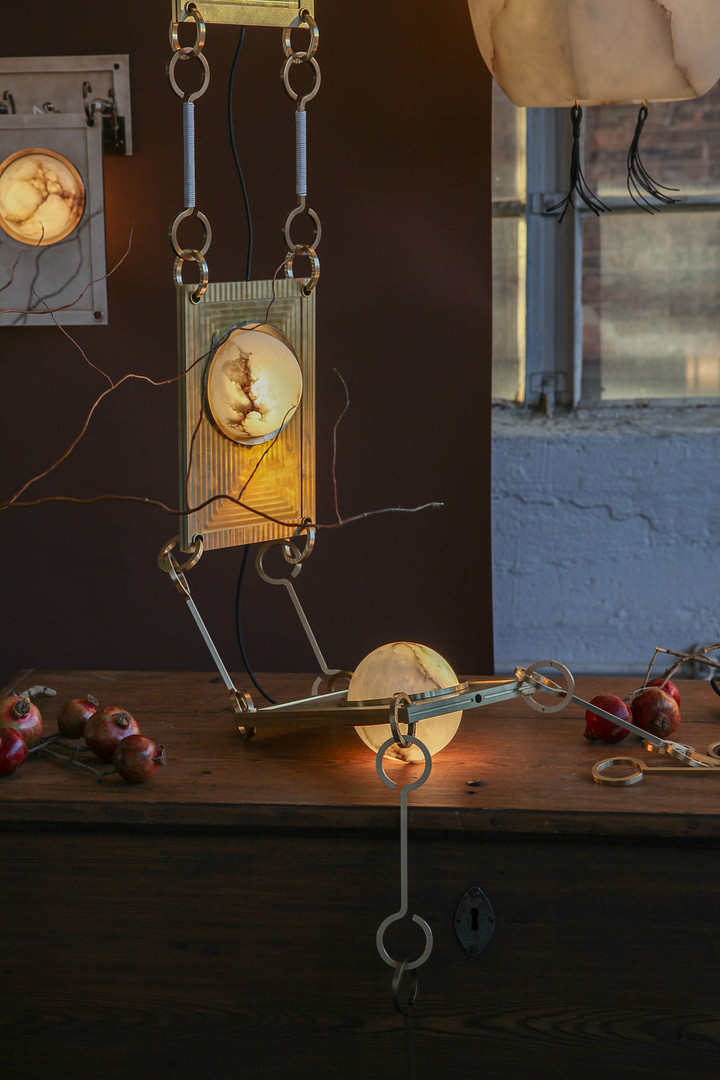
“Matthew is a student of the classical world, and the collection is literally based in Greek mythology, but aside from the nature of the materials, there’s no clear period reference,” says David Calligeros, the founder of Remains. “They’re their own thing.”
Fisher started out as a ballet dancer, leaving his home in Fairfax, Virginia, at the age of 14 to study with the School of American Ballet, in New York. After high school, he danced professionally for a year, until an injury prompted him to take time off from dance and enroll at NYU. “One of the only electives I could get into my first semester was an Egyptian art and architecture class,” Fisher relates. “I signed up for the class thinking, ‘I don’t know what I’m going to do with this, but I’ve got to fill my schedule.’ And that’s when everything clicked for me.”
He ended up earning a degree in ancient art and architecture, figuring he’d wind up working for an architecture or interiors firm, even though he knew that wasn’t what he ultimately wanted to do. In his free time, he crafted objects from soapstone and alabaster as a kind of meditative therapy, eventually enrolling in the MFA program at Pratt while selling the occasional piece to friends and family members.
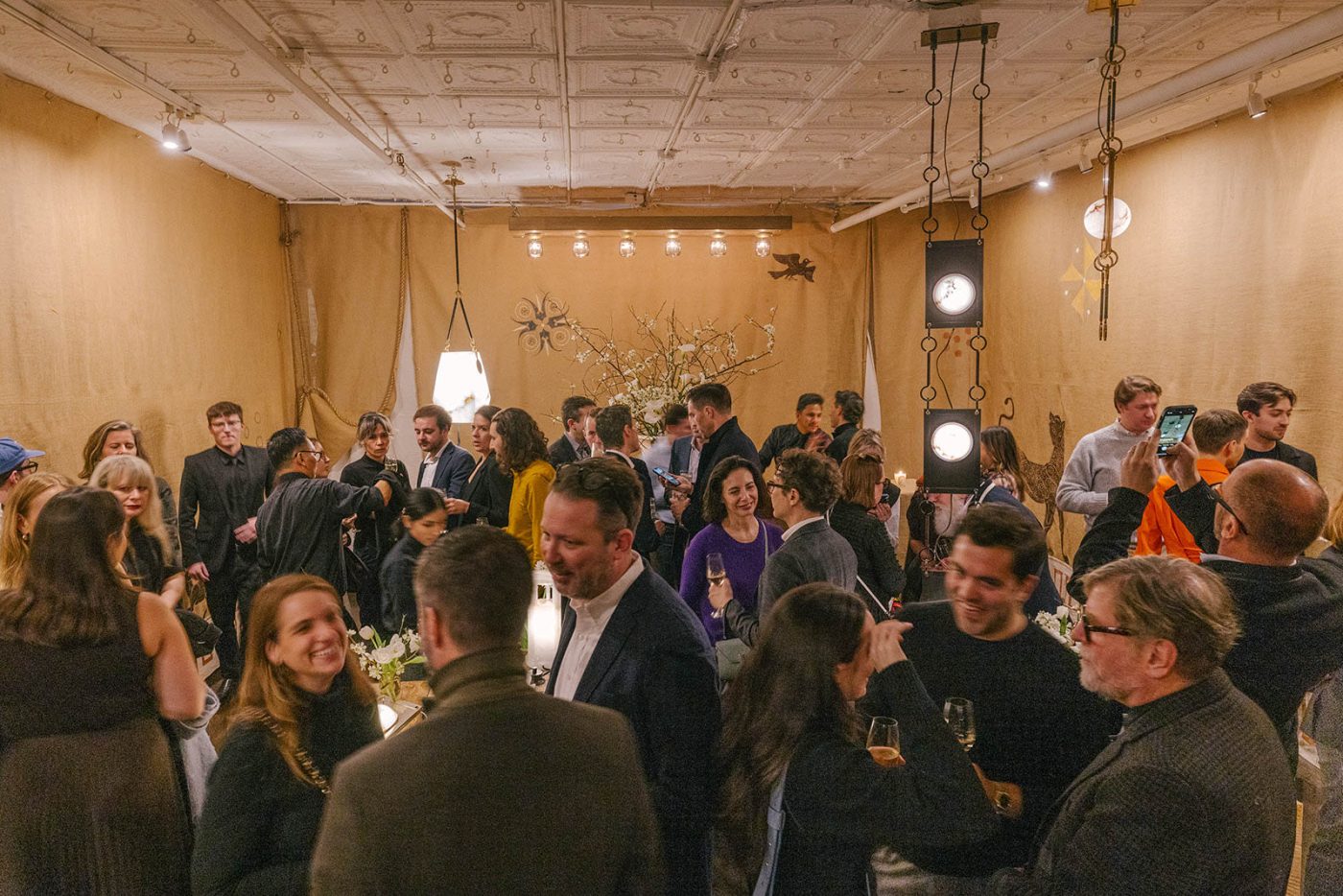
The pandemic was a turning point, says the designer. With time to sit home and create, he developed the foundation for a collection of furniture, vessels and lighting. “That’s when it changed from me creating one piece at a time and offering it to a small circle of friends and family to a business.”
Needing help with an alabaster table lamp he designed, he reached out to Remains, which manufactures all its fixtures in a 25,000-square-foot factory in Brooklyn. As Calligeros got to know Fisher, he asked the designer what else he was working on, and a collaboration was born. “Compared with most people, who bring me a napkin sketch and say they have a collection, Matthew’s work was really kind of crystalline,” Calligeros says. “Seeing the rigor and depth of his oeuvre really lit a fire in me.”
Over the next eight months, Calligeros proposed discrete changes to the pieces, concealing wiring and massaging connections to enhance the purity of the forms. “David’s mind works a mile a minute,” observes Fisher. “He’s able to take pieces apart and put them back together in his head without even touching them.”
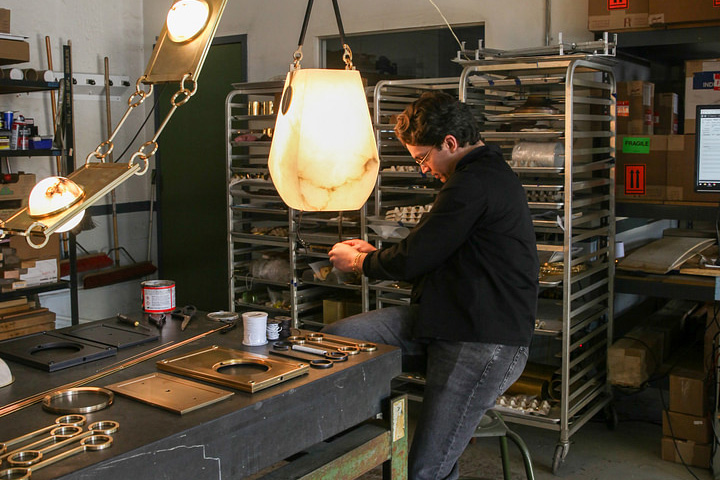
The Ariadne collection includes the aforementioned table lamp, as well as a basket-shaped pendant light. Most of the pieces use LEDs, which have transformed the field of lighting design. “You don’t need a bulb,” Calligeros explains. “The element that’s producing the light is a computer chip — it’s literally an eighth of an inch — so, that has sort of dematerialized the traditional architecture of light fixtures.” It has also allowed Fisher to illuminate small orbs of alabaster, which would turn to dust if exposed to intense heat.
Although Fisher’s creations are grounded in ancient history and narrative, he avoids any literal references. “There’s an ambiguity in all my work,” he says. “That invites introspection and invites someone to bring their own understanding to a piece.” Just like myths, they’re open to interpretation — and timeless.
